Every 12 Years, India Builds a Megacity on an Imaginary River, and Then Demolishes It (14 photos)
Every 12 years, the Hindu festival Kumbh Mela takes place on the eastern bank of the Ganges in the city of Prayagraj. It is not just the largest in India, it is the largest on earth. It is logical that India has the largest number of religious people. 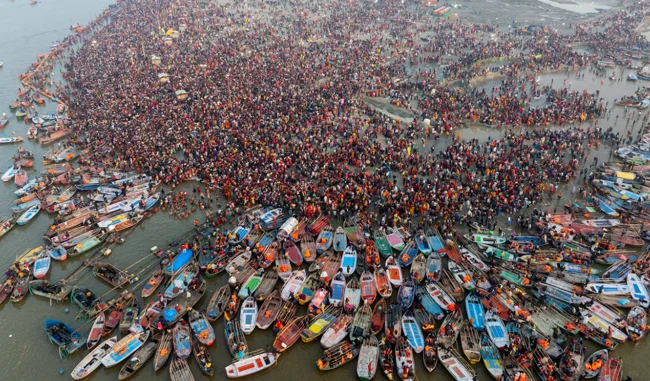
Peak attendance on January 29 - 70 million people
This year, the celebration lasted from January 13 to February 26 and attracted more than 400 million people (in order of turnover). That's why this year's Kumbh Mela is called Maha Kumbh Mela, which indicates its extraordinary importance ("maha" translates roughly as "great"). I'll tell you right away - there was a crazy crush before they managed to count the 40 people trampled to death. 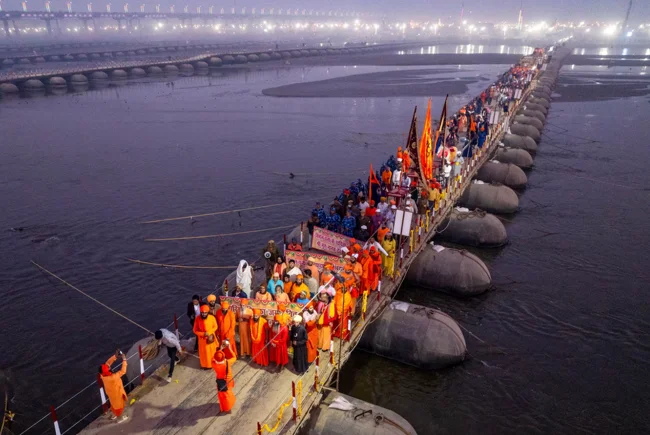
A pontoon bridge over the Ganges, looks epic
What do they do at the world's largest festival
They wash away their sins, as happens with all religious events. And they do it very brightly and joyfully, and not repenting and suffering, which makes this festival incredibly attractive. Prayagraj was chosen for this because two large sacred rivers - the Ganges and the Yamuna - merge into one near it. 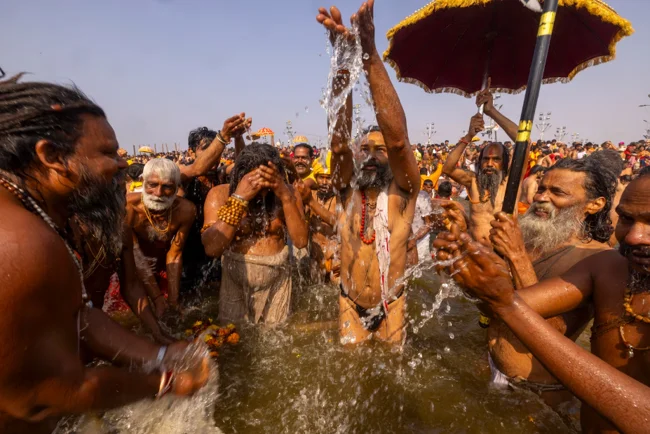
Pilgrims take a sacred dip
According to the Vedic scriptures, the central text of Hinduism, there is a third, mystical body of water that joins the Ganges and Yamuna at this point. This is the celestial river Saraswati, which exists in a metaphysical form, bestowing additional sanctity on the flowing waters. 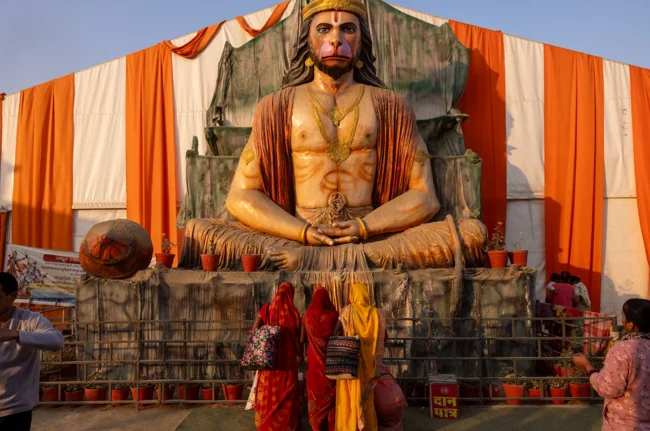
A statue of Hanuman, the half-monkey deity of strength and fortitude
For most of the year, this stretch of land is inaccessible, submerged by the floods of the monsoon season, which lasts from June to September. But as the season recedes, so do the waters, revealing nearly 40 square kilometers of empty floodplain. It is on this briefly empty stretch that the festival square is being built. 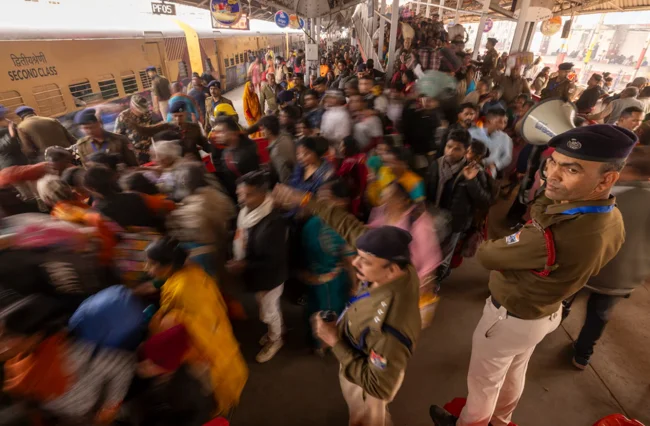
The more trains in the country, the more pilgrims go to the festival
Preparations begin several months in advance to prepare the land for the fact that several hundred million people (!!!) will pass through this place in 45 days. 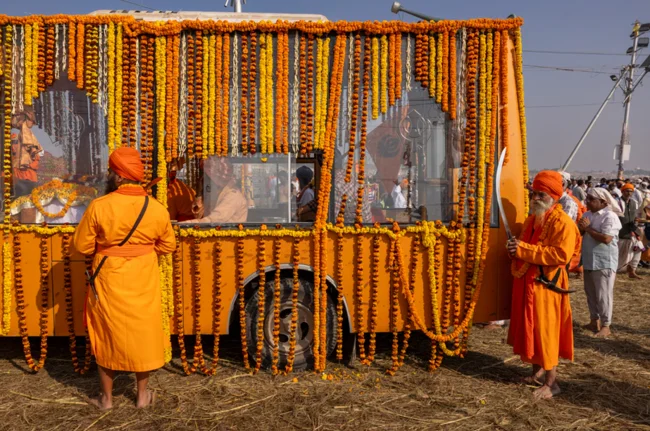
Clergymen WITH SWORDS guard daisies that can be bought and thrown into the water as a ritual
To accommodate millions of pilgrims, Indian Railways has provided 13,000 trains, including 3,000 special trains. Pontoon bridges have been thrown across the Ganges. 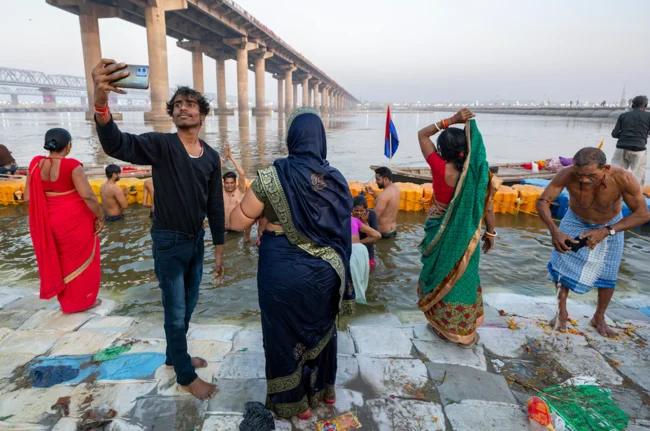
Orange safety floats to keep people from drowning
The Kumbh Mela tent city is set up, where pilgrims settle in to bathe in the sacred waters (including an imaginary river). Most stay for only a few days, while others will dare to spend as many as six weeks there. To accommodate the millions of visitors, the Indian government has built an "Ephemeral Metropolis." 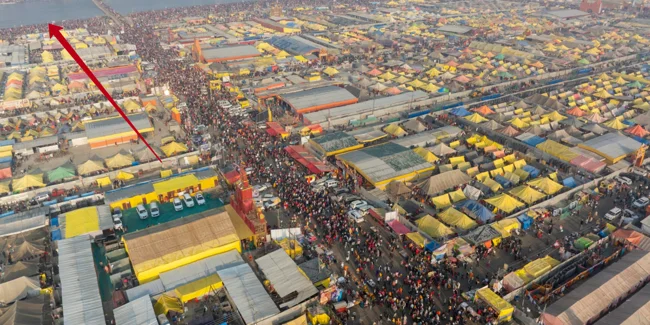
There's a river oooooooooooooore, and this is all a tent city
But when the crowds start to exceed all reasonable limits (and this happens every 12 years), the authorities began to issue leaflets and broadcast over a loudspeaker:
"Only the first two dips are sacred. The third dip has no power."
Pretty clever, to stop people from piling up and piling up in their millions.
Plus, the government has launched campaigns to encourage pilgrims to throw just one or two flowers into the water instead of the more traditional garland. The result is still a colorful stream, but more manageable for those responsible for cleaning the river at the center of this ephemeral city. 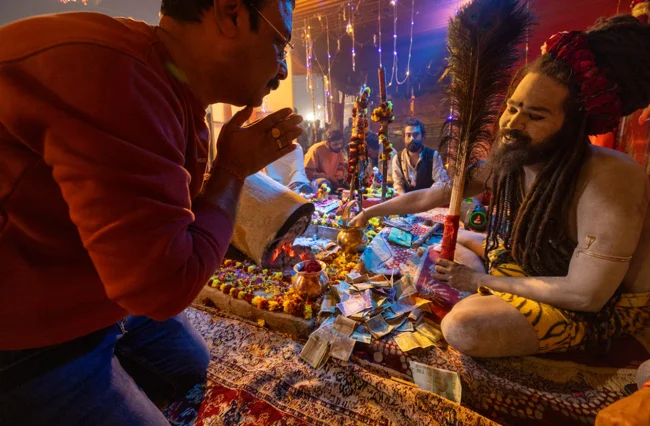
A priest sits, covered in money!
One must stand in the water and splash it into the air, exclaiming, "Jai Shri Ram!" (Glory to God), asking for the absolution of sins in the Ganges.
Pilgrims can purchase blessings and sacred ash for a small donation (as little as 100 rupees).
A City for 40 Days 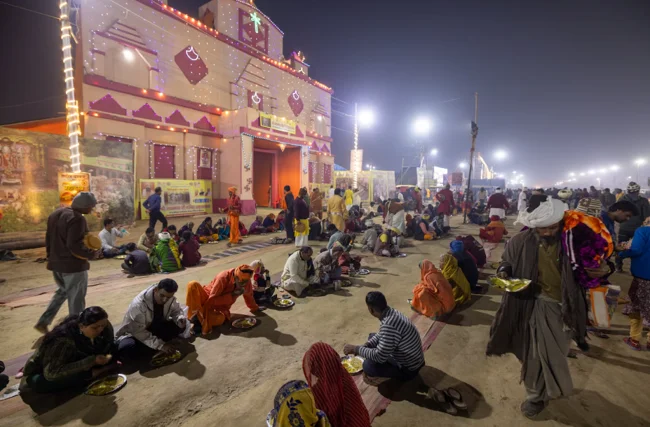
The poorest eat food from free kitchens right on the road
Even though the water goes away every year, this is not a city that emerges from under the water. The government builds kilometers and kilometers of roads and bridges from scratch every time. Once every 12 years you can afford it.
Thousands of buildings used to accommodate visitors and provide services are built in the two months following the floods and leading up to the event.
The red, white and yellow city is made mostly of canvas, bamboo poles and twine. Although this year, corrugated iron was also purchased. 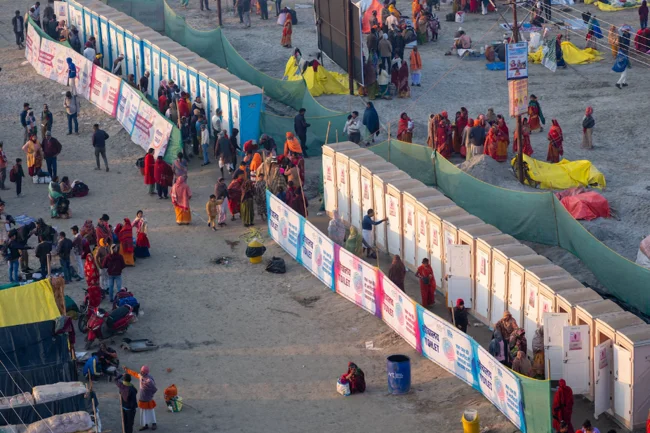
Portable toilets are better than 90% of outdoor toilets in India
There are also social inequalities in the city of faith. Sleeping quarters vary in style and amenities depending on what the pilgrim can afford. Poorer pilgrims stay in shared accommodations, which are simply sleeping mats in public tents built by the government. But there are still shared bathrooms and dining facilities.
Many pilgrims go there even though they know they have no money for anything. They rely on luck and are fed every year by free kitchens for the poor. 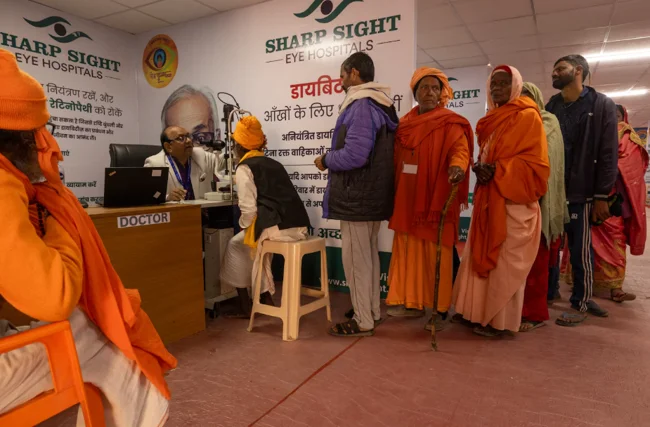
This year the government has set up an eye-check booth (for some reason)
There are also private tents with air conditioning, attached bathrooms, Wi-Fi and meals prepared by a chef. For the luxury humble believers.
For the richest people, this year's Kumbh Mela is set up Dome City. This is already something that private owners have taken care of, these are such super-luxury dome-shaped houses that are advertised as bulletproof and fireproof. One question, who will bring a gun to the festival of forgiveness of sins. 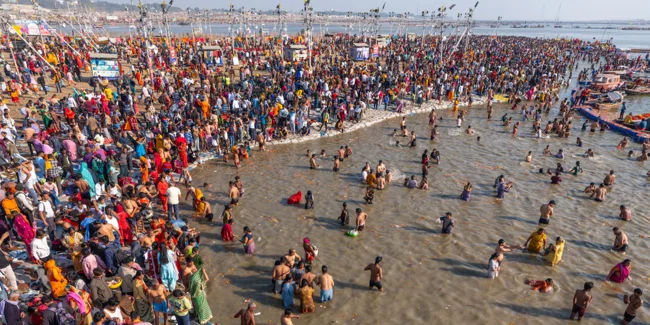
There really aren't that many flowers in the water
At its peak, such a town can accommodate 60 million people, so that the sewage system and toilets can carry away all the waste. There are about 150 thousand toilets there. But it's actually very clean compared to... yes, compared to all of India!
Because the government hired 10,000 cleaners to constantly clean the city. Well, there isn't much trash there to begin with. People who come to the city bring with them modest means for their existence for a few days. Therefore, trash is reduced to a minimum or, at least, organized and disposed of.
Crush-crush-crush 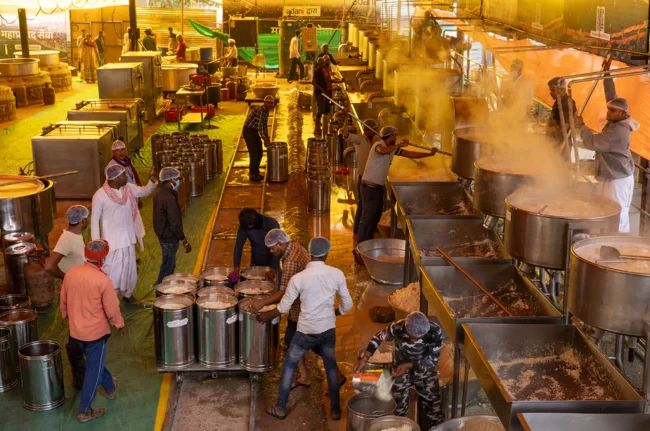
The kitchens have been working non-stop for 45 days and are barely keeping up
400 million – sounds scary. Yes, the biggest crush was in 1954, when there were only 5 million people. But they counted the crushed – 800 pilgrims died, a record. The last time the festival was held was in 2013, when 42 people died.
So, statistically speaking, India has done an amazing job with security. It's hard to believe, considering that these are the Indians, who always spit on security measures.






















